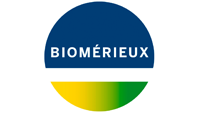bioMérieux Breaks Ground on New Production Line at Durham Facility
09 July, 2014Expansion to help address the global public health threat of sepsis and meet the related demand for microbial detection.
bioMérieux, a world leader in the field of in vitro diagnostics, today announced that it will be expanding its production capabilities at its US headquarters in Durham, North Carolina . The new production line will be the fourth line for the company’s BacT/ALERT® 3D culture products. This important product line represents a critical component in the diagnostics pathway for the detection and identification of bloodborne infections, a growing public health threat. The expansion will increase production to meet increasing global demands. The company expects to spend over $48M and create 44 new positions at the facility. Special guests in attendance for the ground-breaking include Sepsis Alliance Founder, Dr. Carl Flatley and Alexandre Mérieux, CEO of bioMérieux.
Every year, severe sepsis strikes about 750,000 Americans1. It has been estimated that between 28 and 50 percent of these patients eventually die from this condition far more than the number of U.S. deaths from prostate cancer, breast cancer and AIDS combined.2 Blood culture bottles are used as an integral part of Sepsis diagnosis to detect bloodborne pathogens and to serve additional downstream applications for identification and antibiotic susceptibility testing in microbiology labs. Sepsis resulted in an aggregate healthcare cost of $20.3 billion for U.S hospital-related costs in 2011 making sepsis the most expensive condition treated in hospitals.3 Sepsis patients typically require nearly 20 days of hospitalization. CDC researchers found that sepsis hospitalizations increased by more than 300% from 1979 (164,000 cases) to 2000 (660,000 cases).4
“This new production line for our BacT/ALERT blood culture bottles represents a significant investment for our Durham manufacturing facility,” said Stefan Willemsen, President and CEO, bioMérieux Americas. “It is critical that we continue to invest in our technologies to meet customer demands and work together to fight the growing threat of sepsis and of antibiotic resistance.”
“It has been over 14 years since my young daughter, Erin, died so needlessly from sepsis,” said Dr. Carl Flatley, Founder of the Sepsis Alliance. “At the time, virtually no one outside of critical care medicine really understood what sepsis was. Since then, we’ve managed to educate many about sepsis. A state law passed in New York mandating a state-wide sepsis protocol and the CDC just launched a dedicated website on sepsis awareness. However, we still have no universal cure, which makes early detection and diagnosis so critical. I’m pleased to join bioMérieux here today for this important event. The company’s motto is 'Pioneering Diagnosis,' and I can attest to the fact that bioMérieux is committed to developing and bringing to market innovative new technologies to detect sepsis at the earliest possible stages. Whether here in the U.S. or in developing nations, bioMérieux is working globally to reduce sepsis mortality.”
bioMérieux expects construction to be complete by late 2016.
bioMérieux’s Legacy of Leadership in the Fight against Sepsis
bioMérieux is the manufacturer of the VIDAS® B.R.A.H.M.S. PCT (procalcitonin) assay, cleared by the FDA in 2007. It is intended to aid in the risk assessment of critically ill patients on their first day of ICU admission for progression to severe sepsis and septic shock and is an important part of leading hospitals’ protocols for sepsis. bioMérieux also produces instruments for the rapid detection of potentially harmful bacteria, such as those that can produce severe infections that lead to sepsis.
These instruments include the BacT/ALERT 3D which can detect organisms via blood culture, the new VITEK® MS mass spectrometry instrument for rapid identification of over 193 bacteria and yeasts and the VITEK 2 for rapid identification and antibiotic susceptibility testing. In addition, following the recent acquisition of BioFire Diagnostics, bioMérieux offers the FilmArray® Blood Culture Identification Panel (BCID), for a fast and easy syndromic approach to sepsis. This molecular diagnostic test, cleared by the FDA in June 2013, gives results in one hour and can be run on the FilmArray® system.
The combination of BacT/ALERT 3D, FilmArray® ,VITEK® MS, VITEK® 2, and bioMérieux’s Myla® middleware is among the industry’s most comprehensive solutions for microbial identification and antibiotic susceptibility and serves to address the growing needs of today’s laboratories.
About bioMérieux
Pioneering Diagnostics
A world leader in the field of in vitro diagnostics for 50 years, bioMérieux is present in more than 150 countries through 41 subsidiaries and a large network of distributors. In 2013, revenues reached €1.588 billion with 87% of sales outside of France.
bioMérieux provides diagnostic solutions (reagents, instruments, software) which determine the source of disease and contamination to improve patient health and ensure consumer safety. Its products are used for diagnosing infectious diseases and providing high medical value results for cancer screening and monitoring and cardiovascular emergencies. They are also used for detecting microorganisms in agri-food, pharmaceutical and cosmetic products.
bioMérieux is listed on the NYSE Euronext Paris market (Symbol: BIM – ISIN: FR0010096479). Other information can be found at www.biomerieux-usa.com
Contacts
Media Relations
bioMérieux
Suzanne Jones
Tel: +1 919-479-3637
suzanne.jones@bioMérieux.com
Baker & Yorke
Tim Baker
Tel: + 1 216-338-8086
tbaker@baker-yorke.com
- Angus DC, Linde-Zwirble WT, et al. Epidemiology of severe sepsis in the United States: analysis of incidence, outcome, and associated costs of care. Crit Care Med. 2001.
- Wood KA, Angus DC. Pharmacoeconomic implications of new therapies in sepsis. PharmacoEconomics. 2004;22(14):895-906.
- Torio C, Andrews R. National Inpatient Hospital Costs: The Most Expensive Conditions by Payer. Statistical Brief #160. Healthcare Cost and Utilization Project (HCUP).
- August 2013
- Martin MS, Mannino DM, et al. The epidemiology of sepsis in the United States from 1979 through 2000. N Engl J Med. 2003;348:1546-1554.

